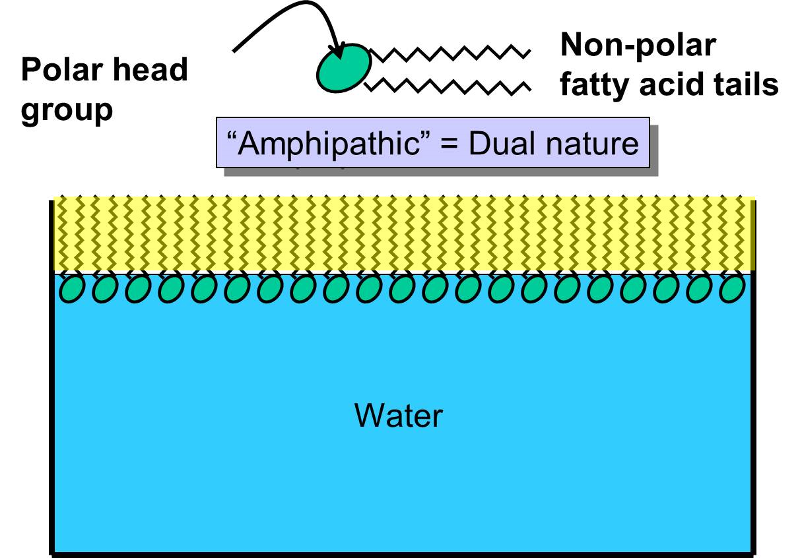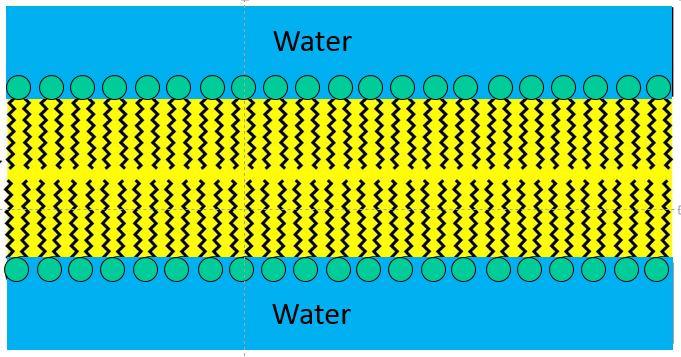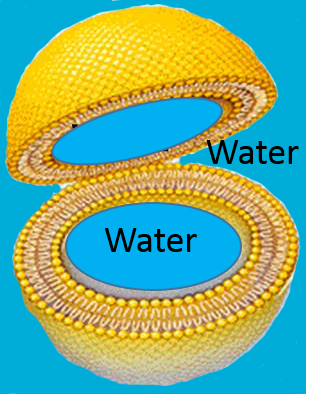Overview of Cell Structure and Function
The Cell Membrane - A Fluid Mosaic of Molecules
If you were to add small amounts of phospholipid molecules to water, they would float to the surface and align so that the polar head groups awere in the water, and the non-polar fatty acid tails would stick up from the surface of the water and form an oily film. If you were to continue to add phospholipids, the film would eventually cover the entire surface.

Once the surface of the water becomes completely saturated with phospholipid, addition of still more phospholipid would result in formation of a bilayer within the water (as shown on the left), since this would be the most thermodynamically stable structure, allowing all of the polar heads of the phospholipids to be in contact with water, while at the same time allowing all of the non-polar fatty acid tails to be sheltered amongst themselves in an oily layer that is away from the water.

With the addition of even more phospholipid to this aqueous solution the phospholipids would spontaneously form spherical bilayers of phospholipids that had water inside and outside as depicted in the figure below.

This bilayer structure is actually the basic structure for cell membranes and many of the internal structures (organelles ) within cells. Imagine a cell as a three dimensional sac consisting of a bilayer of phospholipid molecules. There is water inside the cell and outside the cell, and the polar heads of the phospholipids protrude into the water (shown in blue). Certainly the structure of cells is far more complex than this. Cell membranes have many proteins and glycoproteins which serve many functions,, e.g. as signal receptors and transport conduits to move molecules in and out of the cell. The video below gives a sense of the structure and function of the plasma membrane
) within cells. Imagine a cell as a three dimensional sac consisting of a bilayer of phospholipid molecules. There is water inside the cell and outside the cell, and the polar heads of the phospholipids protrude into the water (shown in blue). Certainly the structure of cells is far more complex than this. Cell membranes have many proteins and glycoproteins which serve many functions,, e.g. as signal receptors and transport conduits to move molecules in and out of the cell. The video below gives a sense of the structure and function of the plasma membrane , or cell membrane, and depicts it as a "fluid mosaic."
, or cell membrane, and depicts it as a "fluid mosaic."
Source: http://www.youtube.com/watch?v=owEgqrq51zY
The Flash animation below gives further detail about the functions of some of the membrane's proteins. Click on the name of each protein type to see more detailed information. [This Flash animation is from "Biology - The Unity and Diversity of Life", 9th edition, by Cecie Starr and Ralph Taggart, Brooks/Cole - Thomson Learning, 2001.]



